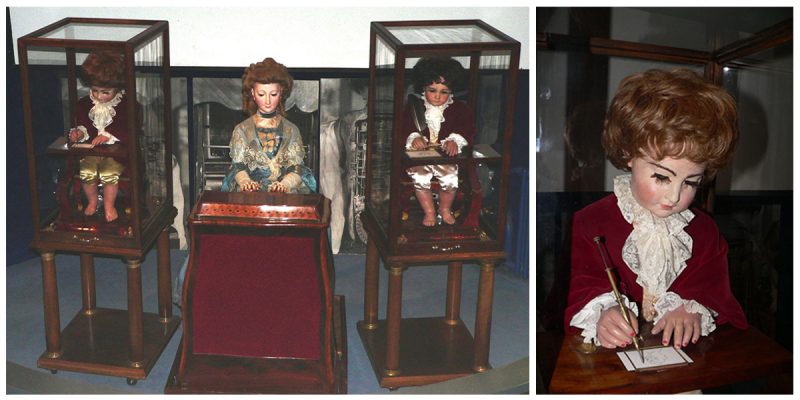Pierre Jaquet-Droz, one of the greatest automata designers to ever live, was an 18th-century Swiss watchmaker and mechanic, known for his elaborate watches and mechanical devices. His initial works were on pendulum clocks, but later he decided to specialize in automatic mechanisms. These magnificent machines, created between 1768 and 1774 with help from his son Henri-Louis and Jean-Frédéric Leschot, are considered to be among the remote ancestors of modern computers, in that they could be programmed to perform certain specific functions. These automata were toured throughout Europe and would win their creator great acclaim.
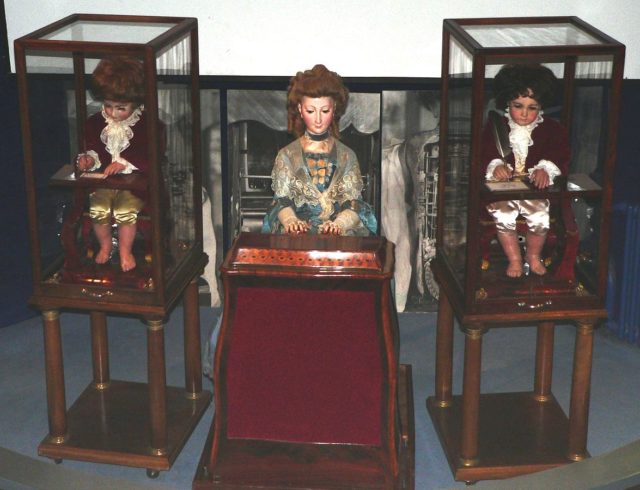
The three complex automata are The Writer (made of 6000 pieces), The Musician (2500 pieces), and The Draughtsman (2000 pieces).
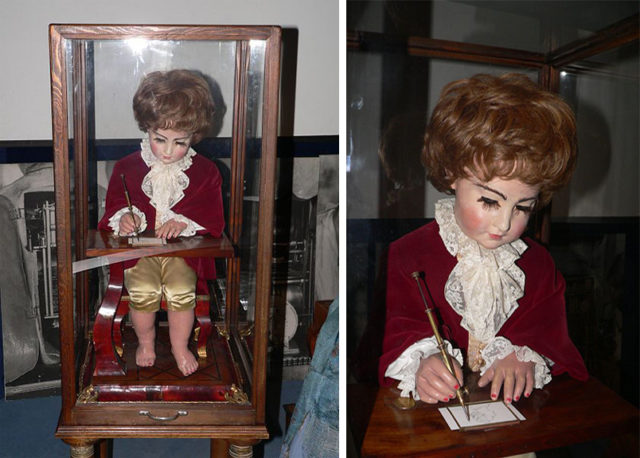
The draughtsman is modeled as a young child and works by using a system of cams that code the movements of the hand in two dimensions, plus another to lift the pencil. The young child is capable of drawing four different images: a portrait of Louis XV, a royal couple (believed to be Marie Antoinette and Louis XVI), a dog with “Mon toutou” (“my doggy”) written beside it, and a scene of Cupid driving a chariot pulled by a butterfly. He also sometimes moves on his chair in a very cute fashion, and from time to time, he blows on the pencil to remove dust.
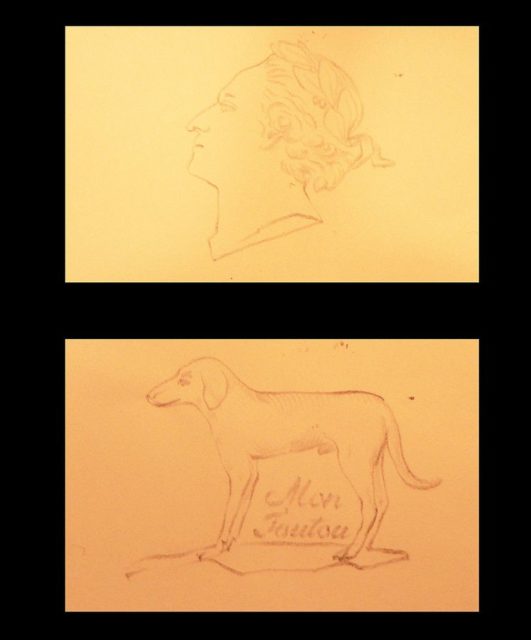
“The Musician”, 1 meter 80cm tall, is an elegant female doll that produces real music by pressing her fingers on the keys of a custom-built organ. The five different melodies that it is capable of playing seem to have been composed by Henri-Louis Jaquet-Droz, who was not only a skillful mechanic but also a gifted musician.
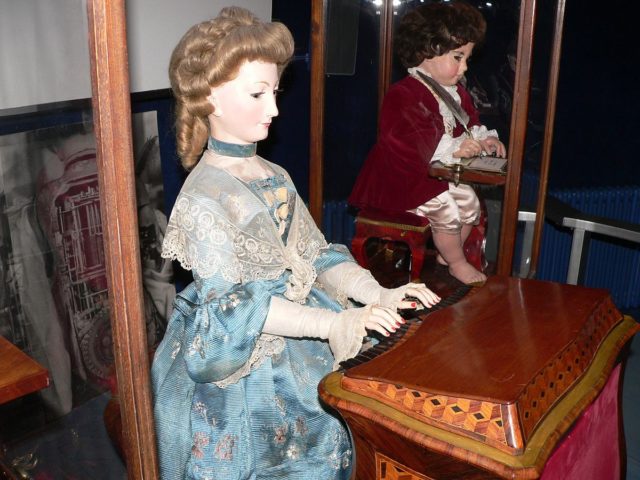
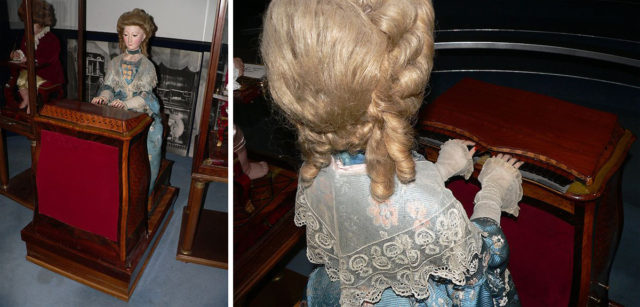
The most impressive and complex of the three is “The Writer“. 6,000 custom made components work in concert to create a self-contained, programmable writing machine. It takes the appearance of a three-year-old child sitting on a Louis-XV-style stool, holding a quill that it dips into the inkwell and then he shakes it slightly before using it to write letters on a piece of paper. He is able to write any custom text up to 40 letters long, and there is a special mechanism that makes his eyes follow his work.
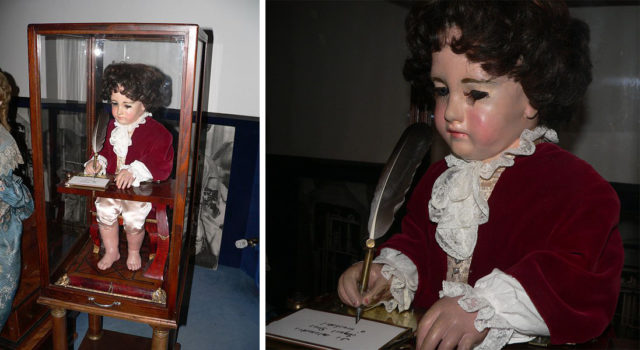
Centuries after their construction, the dolls are still fully functional and can be seen at the Musée d’Art et d’Histoire of Neuchâtel in Switzerland.

